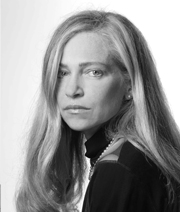Diana Cabeza
Buenos Aires ,
Diana Cabeza studied Fine Arts and graduated in Architecure. During her university studies she designed, just for the pleasure of it, a couple of tables, to which followed variations on Rietveld s Red Blue chair: "There I knew that I was meant to work with objects: I am interested in that scale that verifies itself with the body". Thus, Cabeza began her professional career as a designer of home appliances, researching on the use, on ergonomics and on recovering the value of regional materials. After her experience with the project of transforming the Puerto Madero district in Buenos Aires,...
Diana Cabeza studied Fine Arts and graduated in Architecure. During her university studies she designed, just for the pleasure of it, a couple of tables, to which followed variations on Rietveld s Red Blue chair: "There I knew that I was meant to work with objects: I am interested in that scale that verifies itself with the body". Thus, Cabeza began her professional career as a designer of home appliances, researching on the use, on ergonomics and on recovering the value of regional materials. After her experience with the project of transforming the Puerto Madero district in Buenos Aires, Cabeza set up the Estudio Cabeza, in the old district of Palermo Viejo. Elisabet Cabeza, her sister, is the partner who is in charge of the sales and exportations. Diana's designs, well rooted in Argentina, are renown worldwide and distributed internationally.
The work of Diana Cabeza stands out for its plasticity, for her use of materials in their most primary state, and influence of her past in Fine Arts and her interest for regional styles. "I love materials as rough things, in their most genuine version. I like things with little intervention, with few decisions on their design, this way the result is much closer to the raw material than to the finished product." Within her work, she has been very prolific in designing furniture elements to rest. The benches she creates offer the opportunity to seat in many different ways, as she understands them as a place to rest but also as a place of exchange.
Cabeza's designs show great sensitivity and imagination, and at the same time a major concern for the environment and for the context where her elements will be integrated. The Cornamusa Bench, for example, was designed especially for her project in Puerto Madero (Buenos Aires, 1995) and takes its shape from a cleat, where boats are moored in ports. Another good example of this is her Hoja bench (1995), made of aluminium and wood, with a seat and back of different lengths that allow many combinations of use, and the back, moreover, can be placed wherever the user wishes. The Chafaris fountain, designed in 2001, has different lateral steps and grabs, in order to allow all kinds of users to drink from it. More recent designs are the Comunitario bench (2002), that offers different uses and can reach 4 sq. meters, of the Yacaré bench (2003, Outdoor Furniture 2003 ICFF Editors Award), a bench with no back made of a mesh of stainless steel, whose shine against the light and texture remind of the skin of a yacaré (alligator). Some of the latest creations of Estudio Cabeza are the Alfil seats (2005) or the baskets and giant plant holders Canasto (2005), that can be installed both indoor and outdoor. Diana Cabeza's designs can be seen in many public areas in Buenos Aires: Puerto Madero, la Vuelta de Rocha in La Boca, the Centro Cultural Recoleta, the Facultad de Arquitectura, Áreas Verdes de Costanera Sur, among others, as well as in other regions of Argentina and abroad, in Santiago de Chile, Miami or Chicago.
"Adding to my regional research, I also observe big cities. Barcelona is a wonderful example of a pedestrian way of life, of an outdoor life that has been facilitated."
